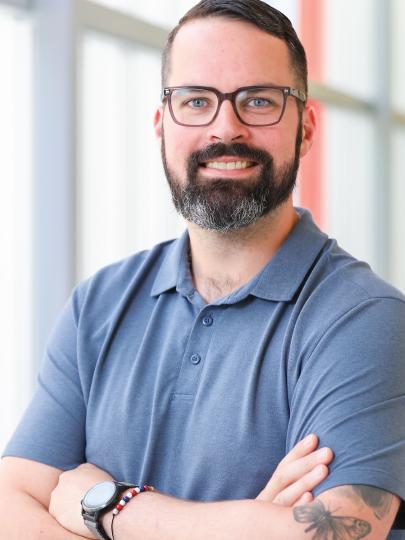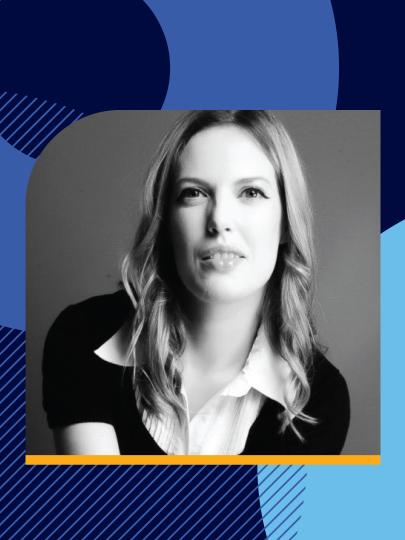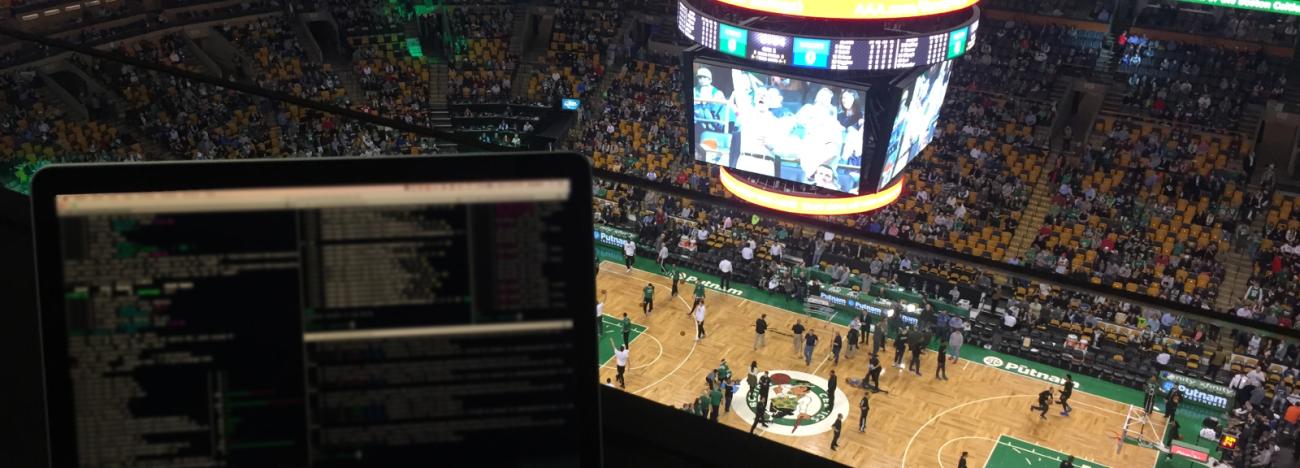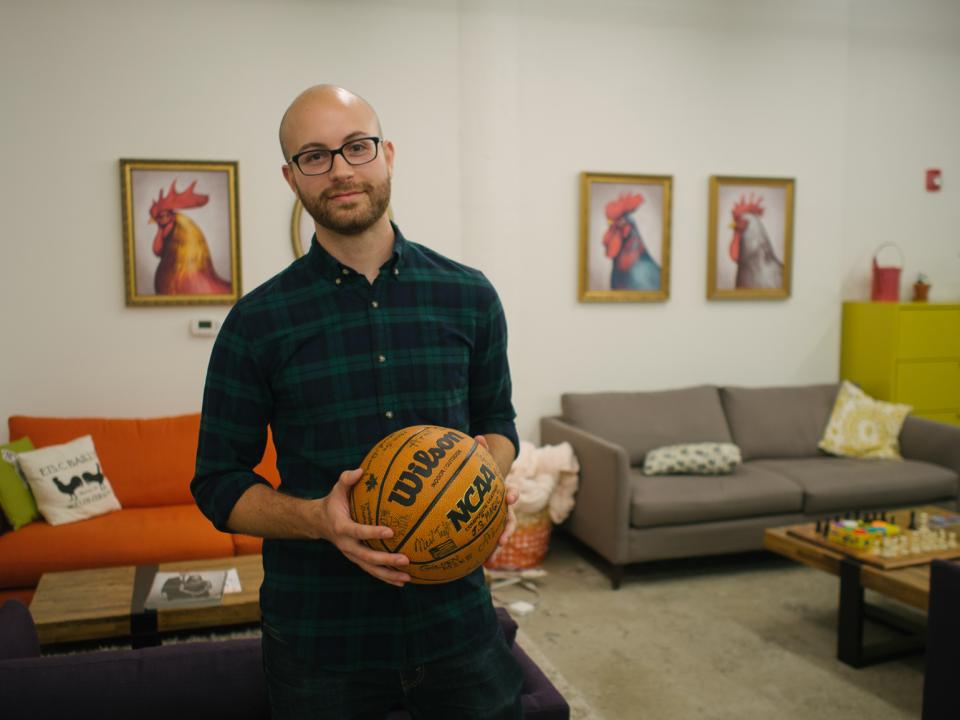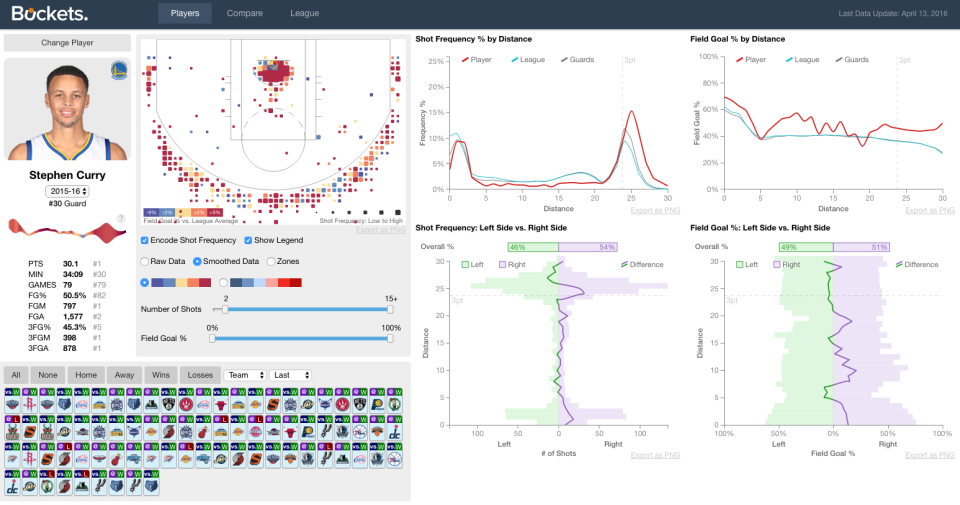Basketball on the Brain
The Boston Celtics won 48 games last season – an eight game improvement over their 2014-15 record – and the team is poised to win 50 games this season, thanks in part to a computer program developed by Peter Beshai, MSc’14, while he was a student at UBC.
Beshai calls the program “Buckets.” Among other things, it analyzes the effectiveness of basketball players when shooting from various positions on court and helps coaches plan game-time strategy. It can also assist team management when they are deciding on which free agents to pursue.
“I'd like to think that my system has helped the Celtics win more games, because it helps the coaches be more informed and, as such, helps them become better coaches,” says Beshai, at the same time stressing that the players on the court are the ones who really win games, and that his program is just one of many factors that have contributed to the Celtics’ success. “But I do believe,” he adds, “that [head coach] Brad [Stevens] and his coaching staff consider the information provided to them through the system seriously when devising game plans.”
Buckets was developed in 2015 while Beshai was a student in the Information Visualization class taught by Professor Tamara Munzner in the Department of Computer Science.
“The NBA project was the most fun I ever had,” Beshai remembers. “I spent every hour of every day inputting data for the project. I went super-overboard on it. I love basketball, and I hope basketball fans have as much fun using it.” (A more general version of the program can be accessed online for stat-loving sports fans – see sidebar below.)
After developing Buckets and placing it online, Beshai tweeted the link to Nylon Calculus, a basketball analytics website, and to a basketball analyst at ESPN, who then tweeted it to others. The program quickly went viral, which led to job offers from the Brooklyn Nets, Boston Celtics and Houston Rockets – not to mention interest from internet gamblers. After considering his options – and realizing he wasn’t a gambler – Beshai took a job in the Celtics’ Basketball Analytics Department to create a specialized version of Buckets exclusively for the team’s use. “I was shocked. Never in my life did I think I’d be working for a basketball team,” he says. “I thought, even if I do it for just one year, I’ve got to try it out.”
“I was shocked. Never in my life did I think I’d be working for a basketball team. I thought, even if I do it for just one year, I’ve got to try it out.” ~ Peter Beshai, MSc’14
Drew Cannon, basketball operations analyst for the Celtics, was impressed with Beshai’s capability. “We were flabbergasted at how good a coder he turned out to be,” he says. “Peter built a system that made it a hundred times easier to use our analytics.”
Beshai stayed with the team for 14 months. “I loved the job and loved working with the people and creating visualizations for the team, but I began feeling lonely because I was the only developer there. I had no one to talk with about my project, because it was a private system and it was a secret. Everyone talked a lot about basketball. They knew all the teams, all the jargon about playing, all the words and phrases. I didn’t feel comfortable giving opinions.”
Growing up in Brampton, Ontario, Beshai found computer programming easier than dribbling a basketball. His grandfather built circuit boards from scratch, his father was a mechanical engineer and Beshai was designing video games as a sixth grader. After developing this natural aptitude with a bachelor’s degree in computer science from the University of Waterloo, however, Beshai took a year off to play guitar in a rock band called Dashing that played in bars across Canada. When Dashing split up, its four members went to various universities to earn master’s degrees – three became computer scientists, and the fourth a theoretical physicist.
Beshai liked living in Vancouver and chose to study Human-Computer Interaction at UBC, because he wanted to work with Kellogg S. Booth, a professor emeritus in the Department of Computer Science. “I liked the work he did in education technology, and I knew he was very well respected in his field,” Beshai says. “I was interested in learning to work with interfaces and apply them to education to find ways to make it easier and faster to learn.”
These days Beshai makes Open Web data visualizations as an engineer for Bocoup, an open source technology and design service based in Cambridge, Massachusetts. “Open Web” is an approach that supports the use of universal, non-proprietary and freely-available specifications for web technologies, making them broadly accessible to internet users. “We open doors for people to use software and create programs that more effectively empower them,” says Beshai. “I’d like to think we’re doing something good for the world.”
His recent projects include a breast cancer browser for Harvard Medical School that allows users to compare data sets from various experiments to find new relationships between the results. It will hopefully help researchers find better ways to prevent and treat the disease. Another project, for M-Lab, is helping provide access to metrics and trends about the health of the internet for researchers, policymakers, regulators, and service providers, with the ultimate goal of ensuring fair internet access around the world.
And he’s still a basketball fan. “I’ve dropped by the Celtics’ practice facility a couple of times when I've been in the area, and I’m proud to see that everyone is still using my program,” he says. “Even the general manager has it open on his screen.”
When asked if his work has earned him the Celtics’ undying gratitude – and a lifetime pass into TD Garden, the Celtics’ arena – he laughs. “I don't have a pass to games, but some of my friends there offer me free tickets from time to time.”


